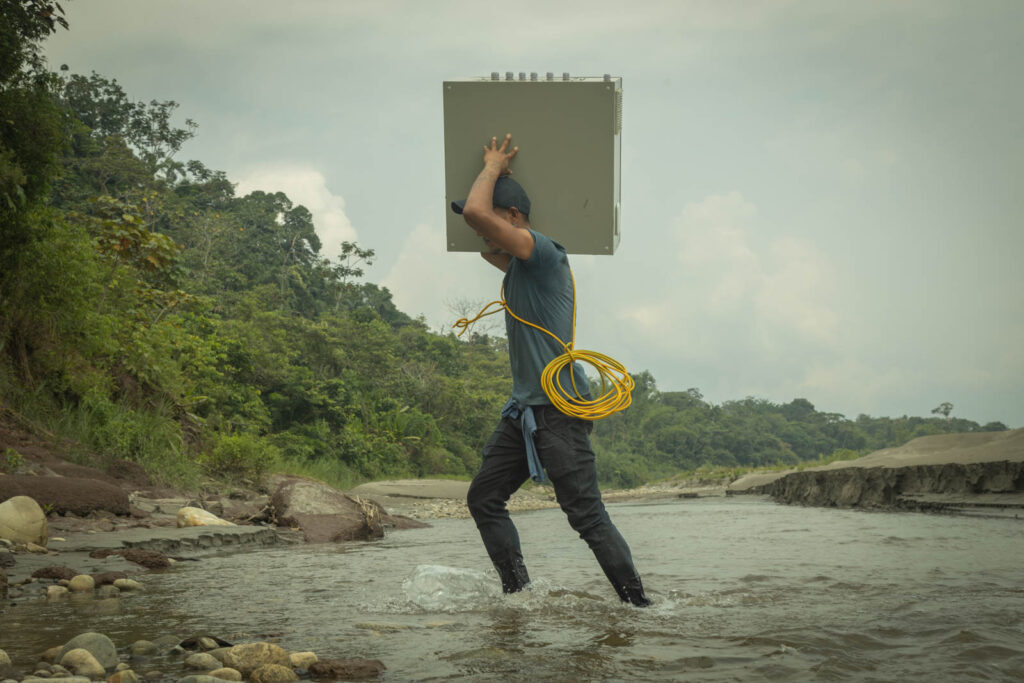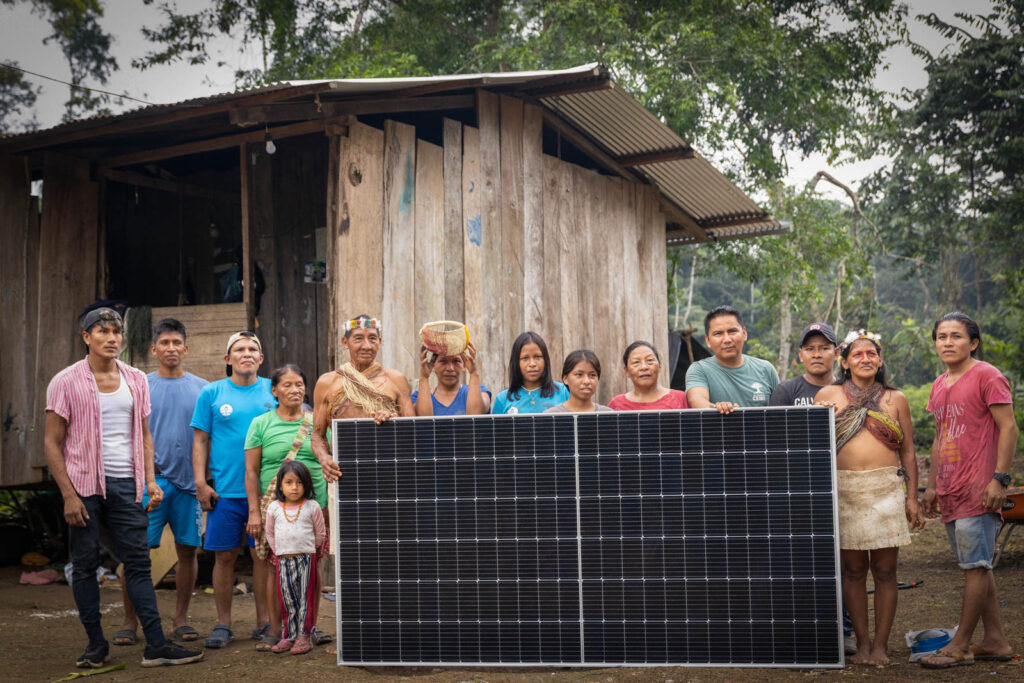For Us, By Us: Indigenous-Powered Solar Energy in the Amazon
As Indigenous nations of the Upper Amazon, we are well acquainted with the brutal consequences of fossil energy. Over decades, oil companies have trashed the rainforest, impoverishing communities and leaving a legacy of toxic devastation. Between 2005 and 2022, according to official records, at least 1392 oil spills occurred in the Ecuadorian Amazon.
While oil companies have made billions in profits, virtually none of that wealth has benefited the lives of people in the area, which has the highest rates of poverty, inequality and child mortality in the country.
Against this reality of injustice, we at the Ceibo Alliance we have developed a bold approach to simultaneously tackle energy poverty in the Amazon whilst leaving the fossil fuel era behind. Over the last years, we have installed over 120 solar systems across four Indigenous nations in the Amazon.
These systems are procured, installed and maintained by our own communities, strengthening their self-governance and energy sovereignty in the process. Today, the solar project is led by a technical team composed of Indigenous youth from the Siekopai, A’i Cofán, Siona and Waorani nations.
As Hernan Piaguaje, a core team member explains, “We don’t need people from outside doing this work anymore, as our people have this capacity and knowledge. They know how to install these systems, and that’s one of the strengths that we’re promoting here at Alianza Ceibo”.
At Alianza Ceibo we work to directly address the needs of communities, strengthening their resilience and relations along the way. Prioritizing solar installation comes partly from a recognition that fossil fuels promote relationships of dependence. Fortunes have to be paid monthly to oil corporations or utilities firms, and communities remain reliant on an external energy grid. Price hikes and energy blackouts are common.



But our decentralized renewable energy system involves an entirely different model of energy, led and owned by communities, and synced to the rhythms of nature. After all, no one can own the heat of the sun or the force of the wind.
Communities allocate the solar systems based on need, not based on who can afford them. Already, systems have been installed in the homes of elders, family homes, and in key communal buildings such as schools and women’s associations.
As A’i Kofán leader Gladyz Vargas reflects, “The solar project fills me with pride when I see the joy of those who now benefit from having access to clean energy in their homes. They have light every night without polluting the environment or generating noise. They can now perform nighttime tasks with safety and peace of mind. This reinforces my commitment to seek more support to continue promoting projects that benefit our communities in a direct and positive way.”



Clear benefits can already be seen across our villages. People have more time in the late evenings, now under a night light, to be together, or work on crafts and studies. Elders, especially those who have experienced falls, feel safer climbing stairs and moving around their homes. Money previously spent on generators and oil supplies can be reinvested into the community. People no longer have to bear the polluting fumes or loud noises of generators, the latter of which can scare away animals, making hunting and fishing more difficult.
In our vision at Alianza Ceibo, solar energy can be a tool that directly supports the defense of Indigenous territories and cultures, especially by assisting the work of Indigenous guards. These guards patrol our territories, monitoring external threats from oil companies, miners and loggers.
To more effectively monitor their territories, Indigenous guards use devices such as phones, drones, and cameras to document evidence of destructive activity. With patrols lasting for multiple days, often guard members are by the depleting batteries of their equipment. Today, multiple panels have been installed on the roofs of the remote refuges of Indigenous guards, allowing guards to recharge monitoring equipment which helps communities patrol and watch over their territories.
By reducing our collective dependence on fossil fuels, meeting our communities’ direct needs, and ensuring we control our own clean energy system, our solar program aspires to be an example of Indigenous self-governance and thriving.





